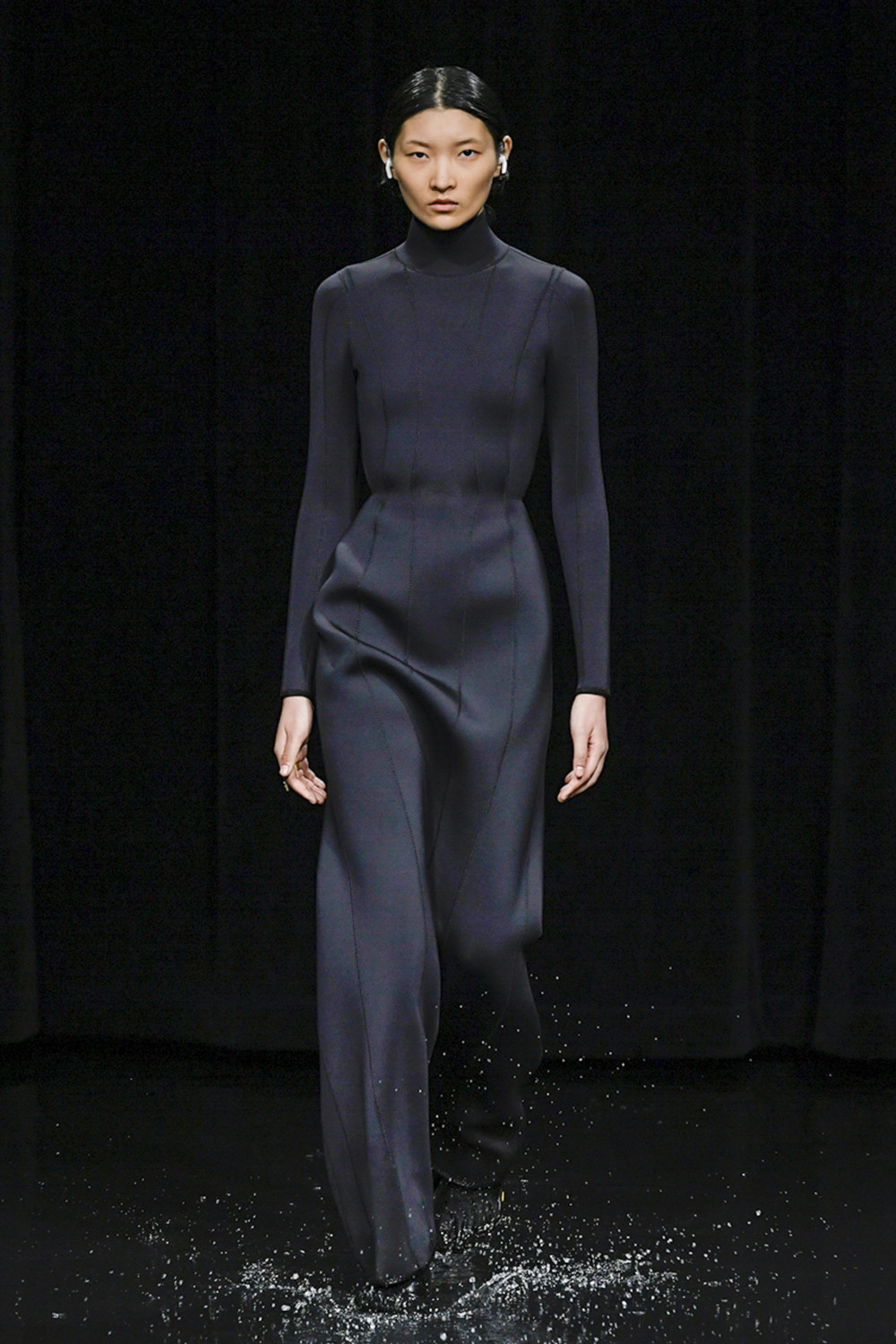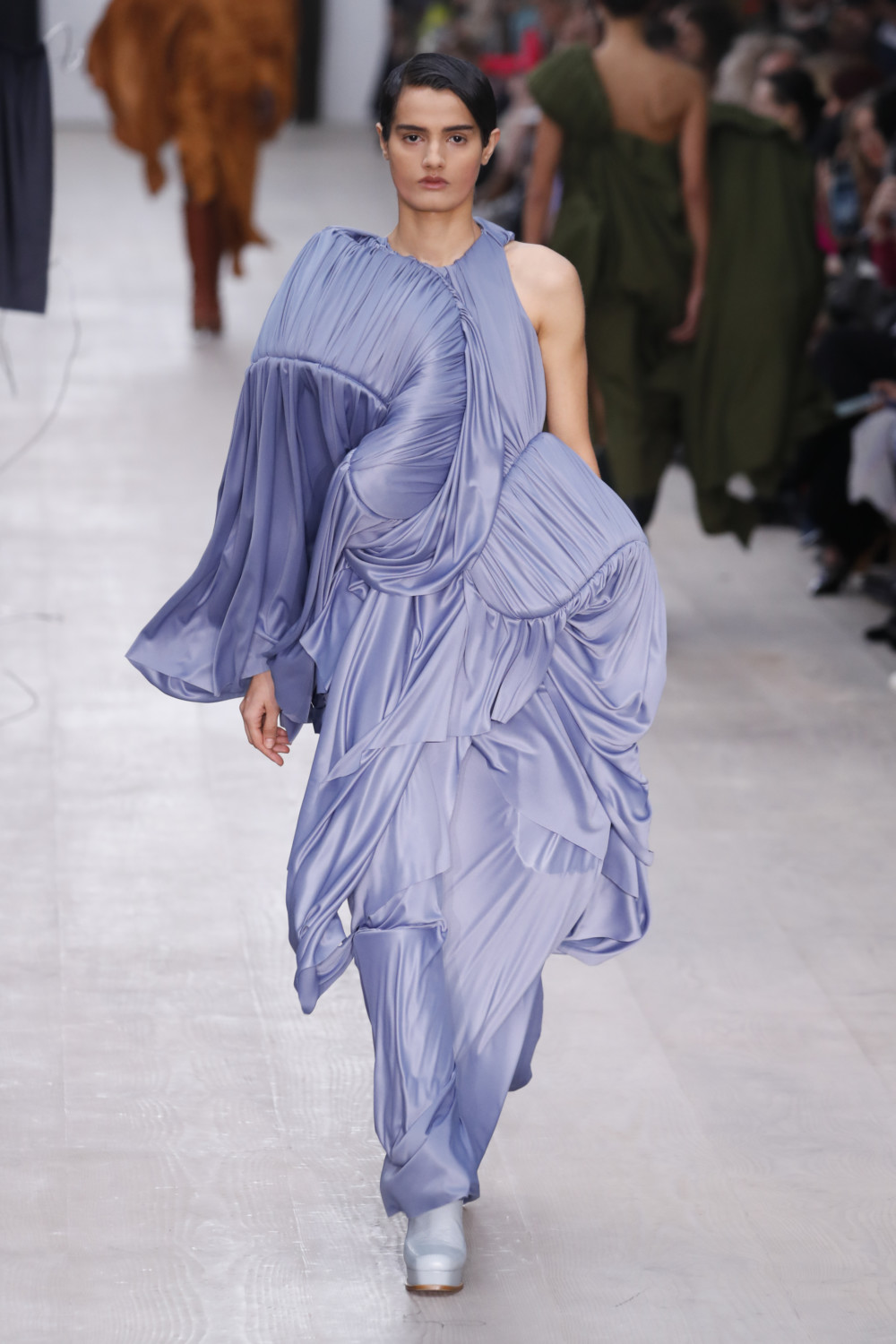Being sustainable seems to be nowadays an inescapable prerogative for a fashion brand in order to survive. It involves different practices to adopt, which include producing smaller collections, upcycling old garments, using deadstock fabrics, saving more water or reducing carbon emissions. They are all practices that have increased exponentially in the fashion industry in the last years, and they are likely to increase even more, in accelerated ways, in the post-pandemic era. But to what extent are they really useful for our planet?
According to Aras Baskauskas, the CEO of label Christy Dawn, these practices only help to mitigate the issue and limit the damage, not to offer a real, beneficial and long-term solution.
Most of the natural disasters due to climate emergency are caused, indeed, by our one-sided relationship with our planet. “We’ve forgotten that we are nature, and because of that, we’ve extracted from the earth without giving back. We take and don’t return”, he told Vogue. The solution would consist then in regenerating what has been damaged or removed, in order to achieve the perfect equilibrium in the exchange of resources with the earth, and this would be totally possible with the “regenerative agriculture“.
But what does this mean actually?
REGENERATIVE AGRICULTURE
Regenerative agriculture is a new organic and sustainable farming, that not only avoids chemicals and pesticides, but also replenishes and strengthens the soil, the plants and all the natural environment surrounding it, thanks to major biodiversity: unlike the conventional, intensive farms, which divide hundreds of acres of single crops (ex: cotton) and use pesticides or deep tilling to keep it flourishing, the Regenerative Ag consists instead in acres of different crops strategically planted to help each other grow and flourish; beneficial insects are used instead of chemicals -that are known to decrease a plant’s ability to absorb nutrients-, and the animals living in the farm would provide the nutrients that help the plants to grow healthier; this is exactly what happens in nature.
These agricultural practices would be then fundamental as they would allow a harmonic cycle in which the plants, through the photosynthesis process, would return to the soil all the carbon trapped in the atmosphere, which is now warming the planet. This would not be possible with conventional agriculture because, being it intensive and divided into single crops, has led to massive areas of stripped, barren land that can’t effectively absorb carbon.
Regenerative agriculture’s impact on soil would be extremely positive, as it would generate rich and nutrient-dense soil and consequently stronger crops, healthier ways of life for farmers and higher quality end products for consumers. In this way, if all industrialized agriculture was converted to regenerative, organic practices, all the world’s carbon could be sequestered and the problem of global warming could fix on its own.
The only downside of it: regenerative farming is a huge investment for the industry both in economical and timing terms – it takes several years for a farm to become regenerative. It’s a logic that maybe goes against traditional fashion’s scheme where things are expected to be done quickly and cheaply. Yet, many industries realized it could offer a long-term investment that is good for the planet and able to offer a product which can be up to the new expectations of a more aware post-COVID-19 consumer, who is likely to shop less and think harder about the real value of the product in itself – in ethical, sustainable, price-quality ratio terms.
By partnering with hundreds of farmers, many of whom are in India, lots of brands have already taken the risk of investing in this kind of agriculture: first of all, Baskauskas’s brand Christy Dawn, but also the outdoor and sportswear brand Patagonia, Richard Malone, Eileen Fisher, and none other than the giant luxury group Kering. Having set itself the goal of reducing its environmental footprint 40 percent by 2025, the latter announced last December a partnership with the Savory Institute, an NGO dedicated to the support of holistic land management and regenerative practices. The goal of this partnership is to help identify and develop a network of farms that Kering can use to source leather and natural fibers like cotton, cashmere and wool.
Regenerative farming is not the only way to obtain real -sustainable- materia prima. The textile recycling as well is a huge and useful process that helps to drastically reduce intensive and polluting production practices at the very beginning of the supply chain.
TEXTILE RECYCLING
Unlike the linear economy, which starts from extra virgin raw materials and ends with the discharged product through incineration after its usage, the circular economy enables instead the recovery of those waste products and their consequent re-employment as new raw material and its return back to the production cycle.
The waste products can be obtained both during the supply chain and production steps (pre-consumers subproducts), as well as after their end of life, as post-consumer subproducts, i.e the entire garment which would be disassembled into its single components made of different materials; that is exactly what happens with domestic garbage recycling.
In order to encourage consumers to recycling habits, some fashion companies, like Patagonia, &Other Stories, Zara, H&M, Intimissimi and North Face, among others, have launched a garment collecting program, which looks to provide vouchers and discounts to consumers: just deliver a bag of old garments (of any brand and any quality) or old home textiles in their stores and you will get paid back!
The recycling process can take place on a chemical level (by dissolving the textile fibers into their rudimentary, starting materials) or on a physical level; even though the chemical recycling is not so environmental-friendly, it is suitable for those fabrics made of mixed fibers, and this process, through depolymerization, would allow the different – natural and synthetic – components to be separated.
The physical recycle can be more eco-friendly and then more recommended, yet it requires a precise partition of homogeneous mono-fiber fabrics. To this end, the most innovative technologies are at work in order to facilitate the process of disassembling. A new sewing thread, created by
Wear2 technology, is an incredible innovation in these terms: the thread looks like a normal yarn and it is equally strong, but when submitted to a specific microwave treatment, at the end-of-life of the garment, it becomes easily destructible so the zips, buttons, fastenings, linings and any other component of a garment can be easily removed without damaging the surrounding fabric. (
http://www.niri.technology/wear-2/). Once the different components are separated and gathered in specific containers, they are ready to turn into new yarns, new textiles or filling materials to be used in varied fields.
It turns out to be fundamental then not only to educate and raise awareness among consumers about the advantages of the recycling practices but also, in the same way, to encourage the companies to partner with recycling infrastructures.
The “Report of Circular Economy in Italy in 2020” shows that the employment rate of circular economy in Italy is 17,7%, and Italy ranks fifth in the European Union.
In 2017, in Italy the import of recycled raw material was twice as much the export: this means that the demand is high on one side, yet on the other, the Italian market isn’t fully able to satisfy this demand by taking advantage of the discharged materials.
Today in Italy there are 18 million tons of urban and special waste products that end up in incinerators; in order to decrease this practice, there’s a real need to strengthen the infrastructures focused on enhancing our internal resources.





